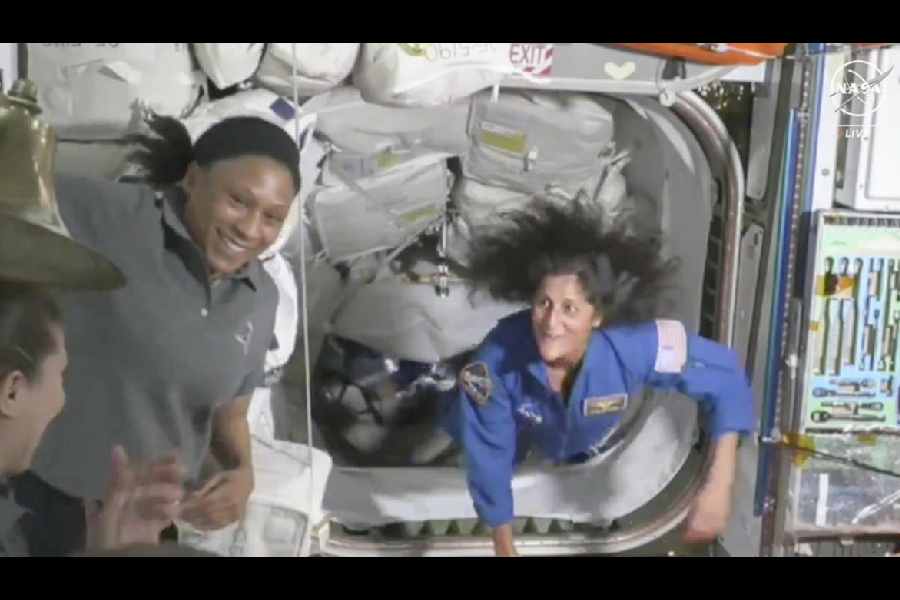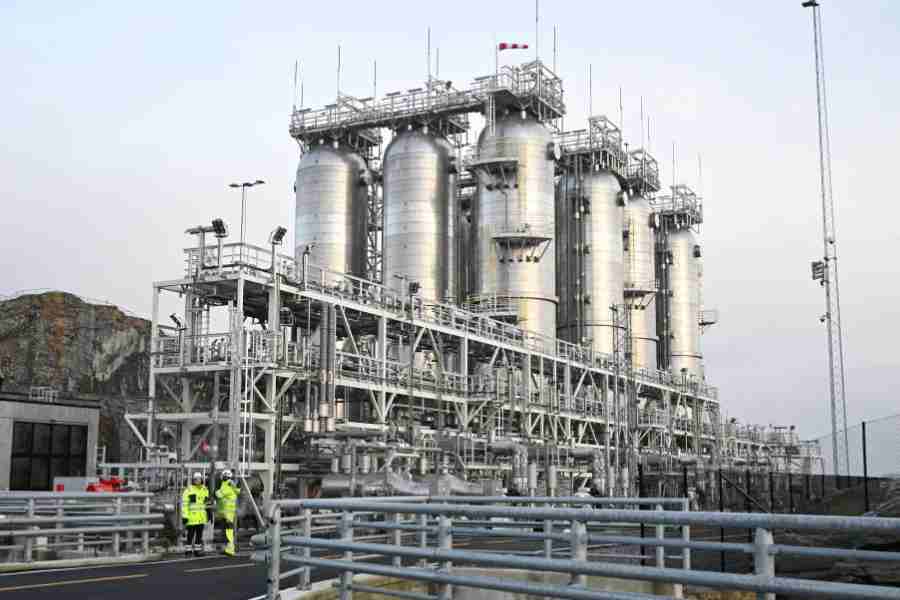Two Nasa astronauts who travelled at the start of June to the International Space Station (ISS) were originally scheduled to return home a couple of weeks ago, completing a test flight of Boeing’s Starliner spacecraft.
Instead, the astronauts, Butch Wilmore and Sunita Williams, will remain on the space station for several weeks longer as Nasa and Boeing engineers continue to study misbehaving thrusters on the vehicle.
But don’t call the astronauts stuck or stranded, officials said on Friday. And there’s no talk of a rescue mission.
“We’re not stuck on ISS,” Mark Nappi, programme manager at Boeing for Starliner, said during a news conference on Friday. “The crew is not in any danger.”
Steve Stich, manager of Nasa's commercial crew programme, also tried to allay worries.
“The vehicle at station is in good shape,” he said. “I want to make it very clear that Butch and Suni are not stranded in space. Our plan is to continue to return them on Starliner and return them home at the right time.”
Stich then added that the right time would be after additional analysis on why five of Starliner’s 28 manoeuvering jets behaved oddly as the spacecraft approached the space station.
Starliner’s computers, which were autonomously guiding the spacecraft, were able to compensate with the remaining thrusters.
Four of the five thrusters now appear to be working properly; the other thruster will not be used during the trip home. Mission managers expect that Starliner can undock from the space station and take Wilmore and Williams on their return trip from space, but they do not fully understand what caused the problem.
Fatal disasters in Nasa’s history, including the loss of the Challenger and Columbia space shuttles, have taught mission managers to be cautious and curious when something is not quite right.
“I think they’re doing their due diligence,” Wayne Hale, a retired Nasa flight director, said in an interview. “Being in no hurry to come home, it makes a great deal of sense to take the time to gather as much information as possible so that they can make sure that the problems are all fixed. That makes a great deal of sense, to take your time.”
Nappi offered a similar appraisal during Friday’s news conference, saying it was prudent to use the time for additional analysis. “It would be irresponsible for us — if we have time and we want to do more — not to do it,” he said.
Beginning next week, engineers will conduct ground tests at Nasa’s White Sands Test Facility in California using a thruster identical to the ones on Starliner. The firings will reproduce the ones that Starliner performed in space.
That will probably take a couple of weeks, Stich said. “Then we’ll give engineers a chance to go look at that thruster,” he said. “This will be the real opportunity to examine a thruster, just like we’ve had in space.”
Engineers will not be able to directly examine the troublesome thrusters on the spacecraft now in orbit because they are located on what is known as the service module. That part will be jettisoned during the flight home, burning up in the atmosphere.
“The test will help us understand thruster performance and may give us 100 per cent confidence that everything we’ve seen on orbit is fine,” Stich said. “It’s just one more piece of data that we can have before we actually deorbit the vehicle.”
Former Nasa officials such as Hale noted that the mission managers’ brushing aside of the engineers’ concerns had contributed to earlier fatal accidents.
During the launch of Columbia in January 2003, a piece of insulating foam from the external fuel tank broke loose and struck the shuttle’s left wing. Hale, who was about to begin a new position as the launch integration manager for the shuttle programme, called contacts at the defence department, asking whether it had the ability to visually inspect the shuttle for damage.
But managers higher up in the Nasa chain of command were not curious and told Hale to retract the request for help. He complied.
What no one knew at the time was that the foam strike had punched a hole in the wing. As it returned to Earth, Columbia disintegrated, killing the seven astronauts aboard.
“Looking back on it, certainly in the Columbia case, there were not enough questions asked,” Hale said. “There was not enough time taken. And the lesson clearly has been learned that you take the time that’s available to get to the most complete answer and answer all the questions that any of the experts might have.”
While Nasa and Boeing study the spacecraft, Stich said, Wilmore and Williams would be able to hop into Starliner to head home in the case of an emergency on the space station. Indeed, when a dead Russian satellite unexpectedly broke apart in orbit on Thursday, they briefly took refuge in the vehicle, and would have used it if the space station had been struck by a large piece of debris.
The capsule is certified to spend 45 days docked at the space station because of limitations to the current design of Starliner’s batteries. But so far, the batteries have performed well, and the stay can be extended beyond 45 days, Stich said.
Starliner is not Nasa’s only problem to solve at the moment. A spacewalk was cut short on Monday when water leaked out of an umbilical cord that connects to a spacesuit while the astronauts were in the airlock. Engineers still do not understand what happened.
“We have to go think about it some more,” said Bill Spetch, Nasa’s operations integration manager for the International Space Station programme.
The next spacewalk, which had been scheduled for Tuesday, will not occur until at least late July, Spetch said.
New York Times News Service










